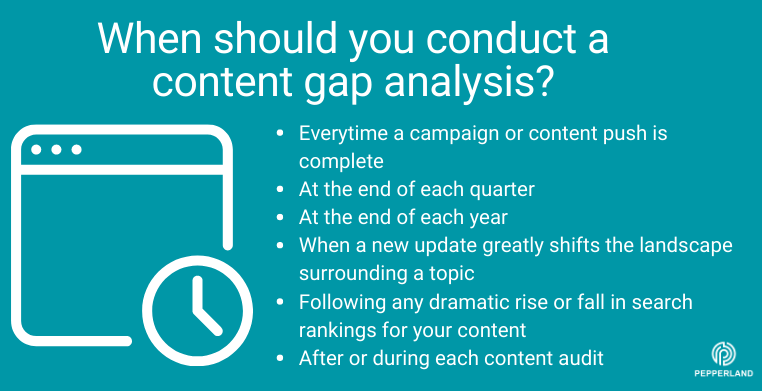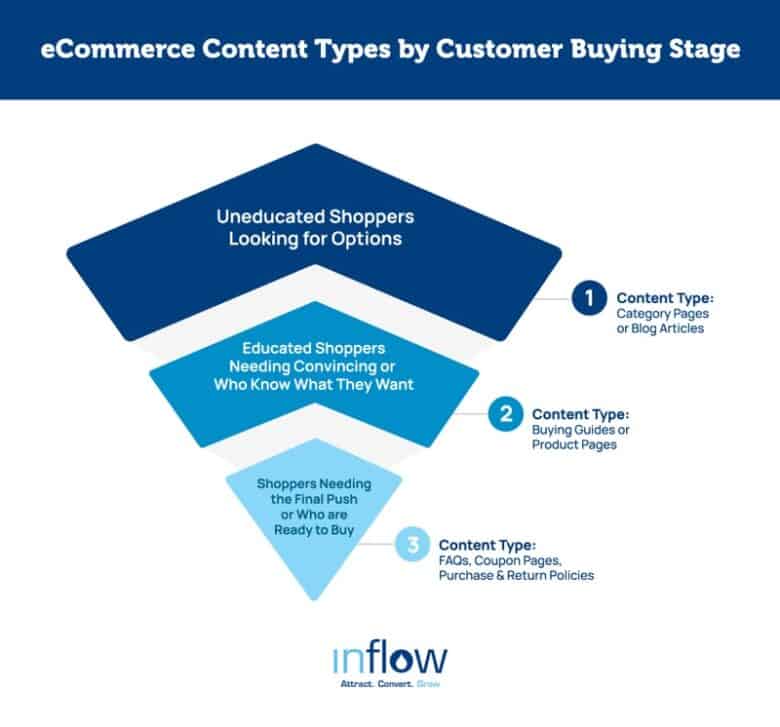Discover how content gap analysis can revolutionize your content strategy and propel your website to the top of search results.

Image courtesy of via DALL-E 3
Table of Contents
Introduction to Content Gap Analysis
Welcome, young readers! Today, we’re going to talk about something really cool called content gap analysis. But before we dive into what that means, let’s break it down into smaller pieces, starting with understanding the concept of content.
What is Content
Content refers to the stuff we see online like articles, videos, pictures, and even social media posts. It’s the information that companies, bloggers, and creators share with the world. Now that we know what content is, let’s move on to the next part – analysis.
What is Analysis
Analysis is like putting on your detective hat and examining something very closely. When we analyze something, we look at it carefully to find out what’s good, what’s missing, and how we can make it better. Now, when we talk about content gap analysis, we’re looking at the missing pieces in the content puzzle.
Putting it Together
So, content gap analysis is about looking at the information that’s out there and figuring out what’s missing. It’s like spotting a gap in a bridge and then deciding how to fill it in. For example, if you’re doing a project on rainforests and you realize there are no videos about animals in the rainforest, that’s a content gap. By finding these gaps, we can make our content better and more complete.
Now that we’ve covered the basics, let’s explore why content gap analysis is so important. Get ready to learn more about why this topic is crucial for websites, blogs, and anyone sharing content online!
Why Content Gap Analysis is Important
Content gap analysis might sound like a big and complicated term, but it’s actually a super helpful tool that can make a big difference in the online world. Let’s take a closer look at why content gap analysis is so important.
Finding Missing Information
Imagine you are reading an article that leaves you with more questions than answers. That’s not a great feeling, right? Content gap analysis helps us avoid this situation by making sure that all the important information is included. It helps us fill in the gaps so readers can get the complete picture.
Helping the Audience
When you search for something online, you want to find exactly what you’re looking for, right? Content gap analysis helps websites and blogs provide the best content for their audience. By identifying what’s missing, they can offer helpful and relevant information that meets the needs of their readers.
Improving Content Strategy
Think of content gap analysis like a treasure map for websites and blogs. It shows them where they can improve and where they can shine. By using this tool, websites can create a solid plan to attract more visitors and keep them coming back for more great content.
Steps to Perform Content Gap Analysis
Content gap analysis involves several steps to help you identify missing pieces in your content strategy and create better, more comprehensive content for your audience. Here are the key steps to follow:

Image courtesy of www.heretto.com via Google Images
Define Your Goals
Start by deciding what you want to achieve with your content. Do you want to increase website traffic, engage your audience better, or improve your search engine rankings? Setting clear goals will guide your analysis process.
Review Existing Content
Take a close look at the content you already have on your website or blog. This step will help you understand your current strengths and weaknesses, and identify areas where you can improve or expand your content.
Identify Competitors’ Content
Research and analyze the content produced by your competitors. By understanding what they are doing well and where they may be lacking, you can find opportunities to create unique and valuable content for your own audience.
Use Tools for Analysis
There are various tools available to assist you in conducting a content gap analysis. Tools like Google Analytics, SEMrush, and Ahrefs can provide valuable insights into your content performance, keyword rankings, and competitor data.
Identify Gaps and Opportunities
Once you have gathered and analyzed your data, it’s time to identify the gaps in your content strategy. Look for topics or keywords that are not covered on your site but are relevant to your audience. This step will help you uncover opportunities for creating new and more valuable content.
Tools for Content Gap Analysis
When it comes to conducting a content gap analysis, having the right tools at your disposal can make the process easier and more effective. Here are some basic tools that can help you identify gaps in your content strategy:
Google Analytics
Google Analytics is a powerful tool that can provide valuable insights into the performance of your website. By analyzing metrics such as page views, bounce rate, and time on page, you can identify which pieces of content are resonating with your audience and which ones may be falling short. This information can help you pinpoint areas where you may be missing key content and opportunities to better engage your readers.
SEMrush
SEMrush is another useful tool for content gap analysis. It allows you to perform keyword research, track your competitors’ content strategies, and identify new topics to cover. By analyzing the keywords that your competitors are ranking for but you are not, you can uncover gaps in your own content and develop a plan to fill them.
Ahrefs
Ahrefs is a comprehensive SEO tool that can provide valuable insights into your website’s performance. With features like backlink analysis, keyword research, and content exploration, Ahrefs can help you identify gaps in your content strategy and make data-driven decisions to improve your online presence.
Common Challenges and Solutions
One common problem you might encounter when conducting a content gap analysis is dealing with too much information. It can be overwhelming to sift through all the data and make sense of it. To overcome this challenge, it’s essential to stay focused on your goals. Start by defining what specific information you are looking for and filter out irrelevant data. Breaking down the analysis into smaller, more manageable chunks can also help in handling the data overload.

Image courtesy of www.pepperlandmarketing.com via Google Images
Finding Quality Data
Another challenge in content gap analysis is ensuring that you are working with accurate and reliable information. Sometimes, the data you come across may not be up to date or may lack credibility. To tackle this issue, it’s crucial to verify the sources of your data. Look for reputable websites, studies, or industry reports to gather information from. Additionally, cross-referencing data from multiple sources can help in ensuring its accuracy and reliability.
Keeping Up with Changes
Content on the internet is constantly evolving, and what was relevant yesterday may not be so tomorrow. One challenge you might face during content gap analysis is keeping your content fresh and up to date. To address this challenge, it’s important to regularly review and update your content. Set aside time to revisit your analysis periodically to identify any new gaps that may have emerged. By staying proactive and adapting to changes in your industry, you can ensure that your content remains relevant and valuable to your audience.
Examples of Content Gap Analysis in Action
Imagine you have a school project where you need to talk about different animals. You start by looking at books, websites, and videos about animals to gather information. After doing your research, you realize that there is very little information about a specific type of bird you want to include in your project. This is where content gap analysis can help you identify the missing information and guide you on what more you need to research or add to make your project complete and informative.
Blog Post Example
Let’s say you have a blog where you write about your favorite video games. You decide to use content gap analysis to improve your posts. By looking at what topics your competitors are covering and analyzing your own blog posts, you notice that you haven’t written much about upcoming game releases. This insight prompts you to create a new series of posts covering the latest game releases, filling the gap in your content and providing your readers with valuable information they are interested in.
Tips and Best Practices
In order to effectively conduct a content gap analysis, here are some key tips and best practices to keep in mind:

Image courtesy of www.goinflow.com via Google Images
Consistency is Key
It’s essential to regularly perform content gap analysis to ensure your website or blog stays relevant and competitive. By consistently identifying gaps in your content, you can continuously improve and adapt your strategies to meet the needs of your audience.
Stay Organized
Organization is key when it comes to content analysis. Make sure to keep track of your findings, plans, and any new content ideas that arise during the analysis process. By staying organized, you can effectively prioritize tasks and ensure no important information falls through the cracks.
Keep Learning
Content gap analysis is an ongoing process that requires continuous learning and improvement. Stay updated on industry trends, new tools, and best practices to enhance your analysis skills and stay ahead of the curve. By embracing a mindset of lifelong learning, you can take your content strategy to the next level.
Conclusion
In conclusion, content gap analysis is a valuable tool that helps websites and blogs identify missing information, improve their content strategy, and better serve their audience. By following a few simple steps and using the right tools, anyone can conduct a content gap analysis to ensure their content is comprehensive and useful. Let’s recap the key points we’ve discussed throughout this article.
Recap of Key Points
We began by understanding what content and analysis mean individually before combining them to conduct content gap analysis. We explored why content gap analysis is important, how to perform it step by step, and the tools available to assist in the process. Additionally, we looked at common challenges faced during content gap analysis and provided solutions to overcome them. Finally, we delved into practical examples of content gap analysis in action and shared tips and best practices for effective analysis.
Final Thoughts
Content gap analysis is a dynamic and essential practice for anyone creating online content. By consistently evaluating and filling in any missing information, you can stay ahead of the competition and provide valuable content for your audience. Whether you’re a student working on a school project or a blogger looking to enhance your posts, content gap analysis can guide you towards creating impactful and relevant content. So, why not give it a try yourself and see the difference it can make in your content strategy. Keep learning, stay organized, and remember that consistency is key in conducting successful content gap analysis!
Want to turn these SEO insights into real results? Seorocket is an all-in-one AI SEO solution that uses the power of AI to analyze your competition and craft high-ranking content.
Seorocket offers a suite of powerful tools, including a Keyword Researcher to find the most profitable keywords, an AI Writer to generate unique and Google-friendly content, and an Automatic Publisher to schedule and publish your content directly to your website. Plus, you’ll get real-time performance tracking so you can see exactly what’s working and make adjustments as needed.
Stop just reading about SEO – take action with Seorocket and skyrocket your search rankings today. Sign up for a free trial and see the difference Seorocket can make for your website!
Frequently Asked Questions (FAQs)
What is a Content Gap?
A content gap is like a missing puzzle piece in your website or blog. It’s when you realize that there’s information that your audience wants but you haven’t provided. By finding these gaps, you can create new content to fill in these missing pieces and make your website even better!
How Often Should I Do a Content Gap Analysis?
It’s a good idea to do a content gap analysis regularly to keep your website or blog up-to-date and provide the best content for your audience. Depending on how often you publish new content, you might want to perform a content gap analysis every few months to ensure you’re staying on top of your audience’s needs.
Do I Need Special Tools?
While there are tools like Google Analytics, SEMrush, and Ahrefs that can make content gap analysis easier, you don’t necessarily need them to get started. You can start by reviewing your current content, looking at your competitors’ websites, and identifying what’s missing on your own. As you get more comfortable with the process, you can explore using tools to help streamline your analysis.







